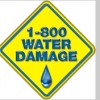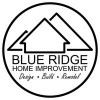
Most auto body paints have either a water or solvent base. In both cases, colored pigments are suspended in the base, which is thinned and applied using a sprayer. As the base fluid evaporates, the colored particles lock together to create the paint film.
In auto collision repair, the technicians will carefully disassemble the vehicle to expose any structural damage that may have been obtained upon impact. This is the type of damage that can be easily overlooked but can significantly affect they safety of the car.
If you ever accidentally spill gasoline, antifreeze, oil, transmission fluid or any other types of solvents on your car, immediately wash these liquids off with water. Wiping liquids with a cloth will only spread them over the car’s paint finish.
Don’t let your insurance company tell you that you have to go to the repair shop that they tell you to after your car has been in an accident. It is your right to be able to choose the shop that makes any repair to your vehicle.
Your auto body primer may be out of sight, but it’s important. The primer acts as a tie-coat between the corrosion-resis tant layer and the topcoat, smooths out irregularities, improves adhesion, and helps protect against dings, chips and UV light damage.
Similar Businesses







